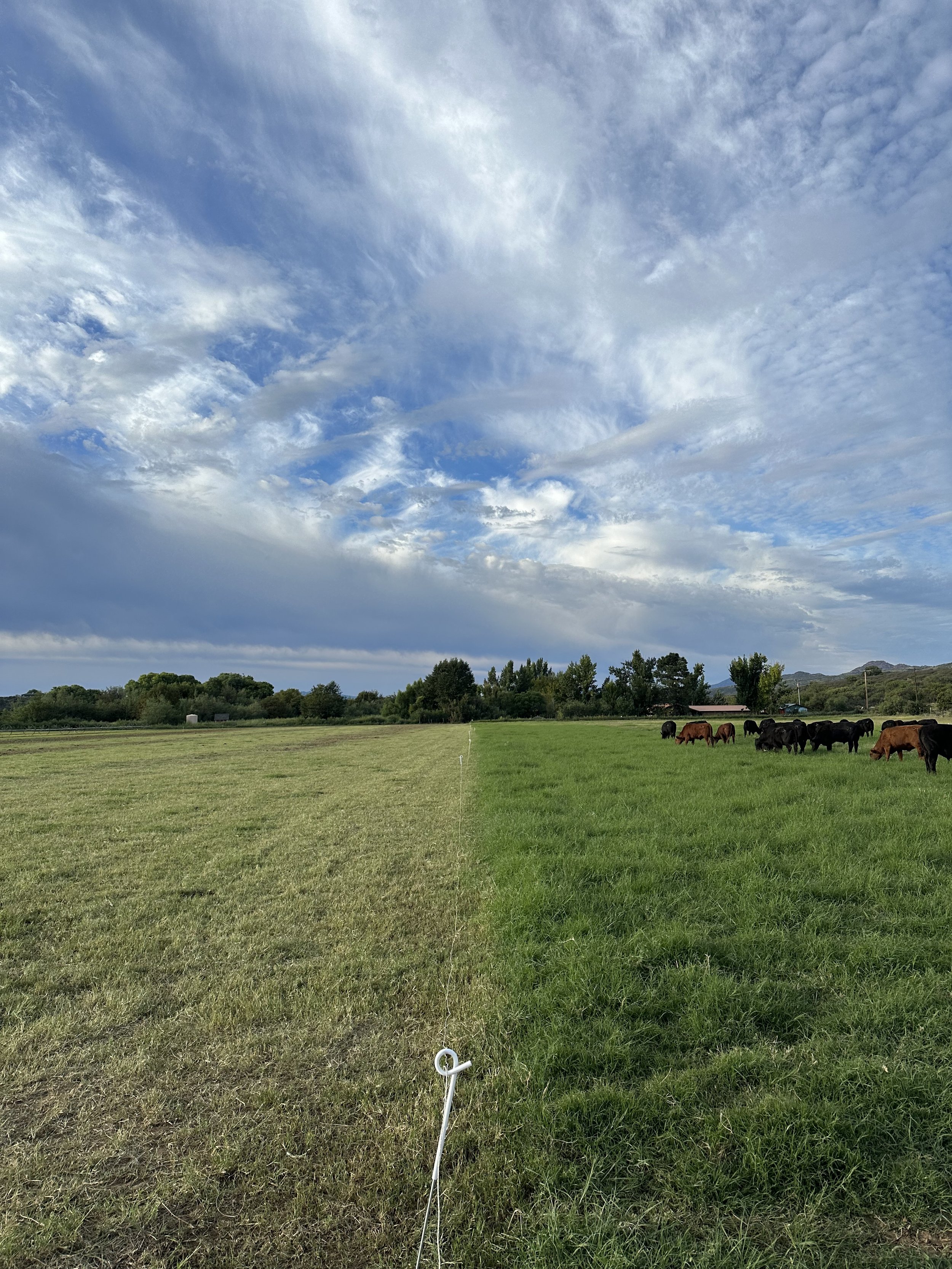
Regenerative Farming
Regenerative Farming is a method of farming that focuses on raising crops and livestock in a sustainable way. The main focuses are soil health, reducing chemical inputs, conserving water, and producing healthier food in a way that makes the land better.
To understand regerative farming, we have to first understand soil health. Soil health is defined as the continued capacity of soil to function as a vital living ecosystem that sustains plants, animals, and humans. Healthy soil gives us clean air and water, bountiful crops and forests, productive grazing lands, diverse wildlife, and beautiful landscapes. Soil does all this by performing five essential functions:
Regulating water
Soil helps control where rain, snowmelt, and irrigation water goes. Water flows over the land or into and through the soil.Sustaining plant and animal life
The diversity and productivity of living things depends on soil.Filtering and buffering potential pollutants
The minerals and microbes in soil are responsible for filtering, buffering, degrading, immobilizing, and detoxifying organic and inorganic materials, including industrial and municipal by-products and atmospheric deposits.Cycling nutrients
Carbon, nitrogen, phosphorus, and many other nutrients are stored, transformed, and cycled in the soil.Providing physical stability and support
Soil structure provides a medium for plant roots. Soils also provide support for human structures and protection for archeological treasures (NRCS 2023).
Soil health is built through minimizing disturbances, and maximizing living roots, biodiversity, and soil cover. these are all the core principles of Regenerative Farming. Through developing our soil health, we use less water (as our soil begins to be more drought resistant), and add more nutrients and diversity to our crops and grasses. Through higher quality crops and grasses, we feed a more diverse group of animals. Our animals then return valuable nutrients to the soil, and deliver healthier meat.
Practices we implement at Iron Springs Ranch
At Iron Springs Ranch, we are committed to being the best stewards we can be, of the beautiful land we are entrusted with. We won’t pretend that we are experts, because we are on this journey, learning as we go! We are excited to be transparent with our successes and failures, and hope to encourage others to increase their yields, health, and land through regenerative farming! For more current insights and monthly news, please contact us or swing over to our monthly newsletter!
On the ranch, we implement Weed Management through mob and rotational grazing, mowing, cover crops, and over seeding with no-till farming. Our intentional use of cover crops and rotational grazing add necessary nutrients back into the soil. Composting gives us organic material to add nutrients supplementally, reducing our chemical inputs. Our riparian buffers make sure we have adequate filtering of any run-off while our soil health continues to develop. Eventually our soil will continue to hold more and more water, reducing run off and volume of water needed to maintain crops and grass.
Weed Management- Cover Crops, Over Seeding, Rotational Mob Grazing
In regenerative farming we focus more on weed management rather than total weed eradication. This is because it is important to the soil to have root structures present in favor of bare soil. Over time we absolutely want to work towards covering the soil with cover crops that add to our soil, and native grasses to help feed our cattle instead of just weeds, but we do it gradually through cover cropping/overseeding to choke out the weeds, not by tilling and spraying chemicals. Mob and rotational grazing also allows our cattle to go to work for our soil health as well, eating and trampling some organic matter into the ground while also fertilizing it with their manure. Through frequent soil testing, we’re able to rotate our crops and covers to intentionally put nutrients back into the soil that previous plants may have taken out, or any pre-existing imbalances. Throughout this process our soil integrity is protected by always being anchored with roots and undisturbed soil structure.
No-Till Farming
No-till farming is a practice that minimizes soil disturbance, protects the soil microbiome, and leaves root and soil structures intact. In this method, there is no plowing/tilling of the soil. This makes the soil less vulnerable to wind/water erosion, prevents run off, moisture loss, and drying out in high temperatures. In no-till, seed is either drilled directly into the soil minimizing soil disturbance, or broadcasted and lightly harrowed in, never touching anything beyond the organic material layer of the soil.
Further Sources: If you are interested in more in-depth Regenerative Farming information, we highly recommend the following!
Gabe Brown: https://brownsranch.us
Joel Salatin: https://polyfacefarms.com/about/
Greg Judy: http://greenpasturesfarm.net
Ray Archuleta: https://soilhealthacademy.org/team/ray-archuleta/
Soil Health. Natural Resources Conservation Service. (2023, August 17). https://www.nrcs.usda.gov/conservation-basics/natural-resource-concerns/soils/soil-health





